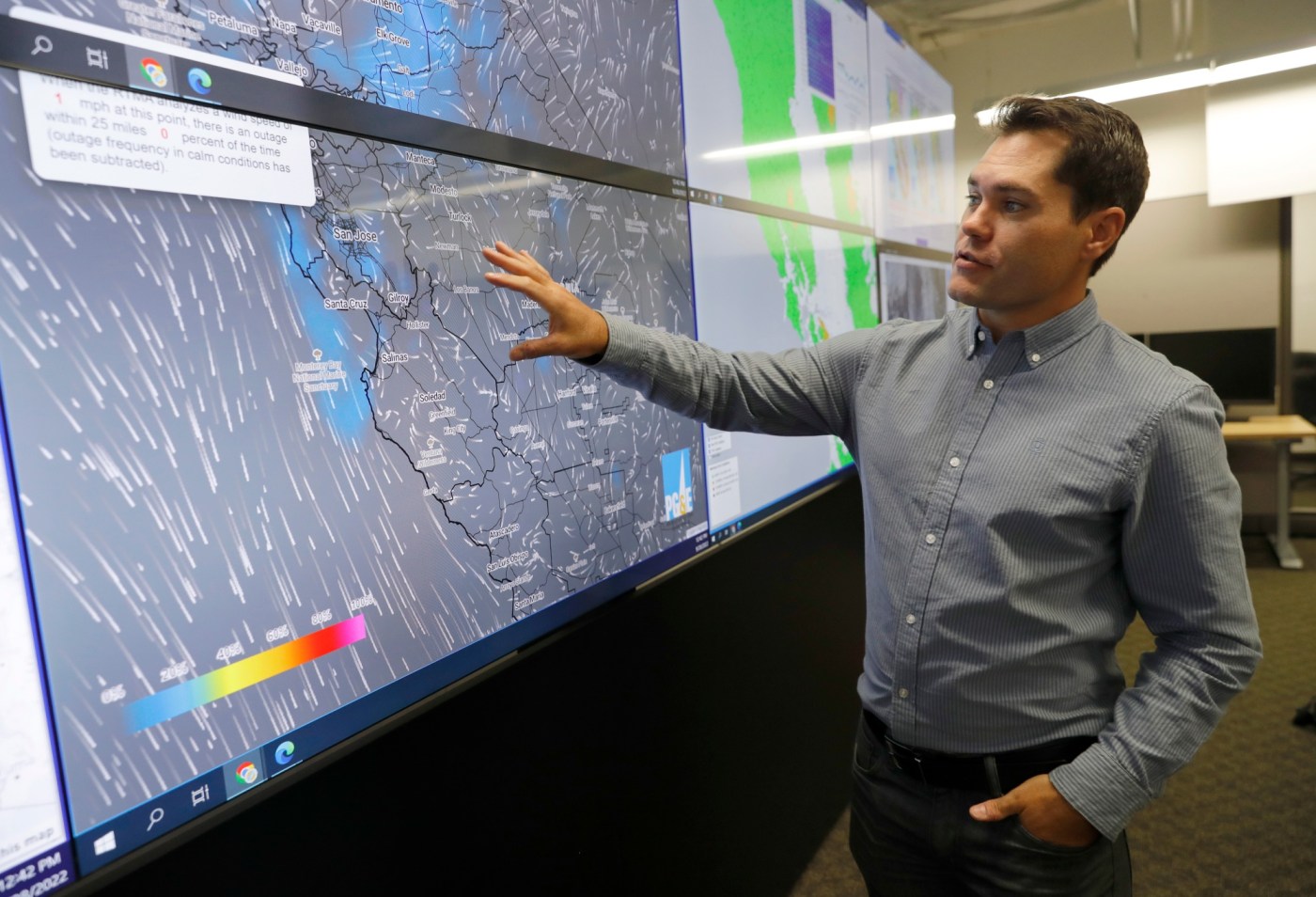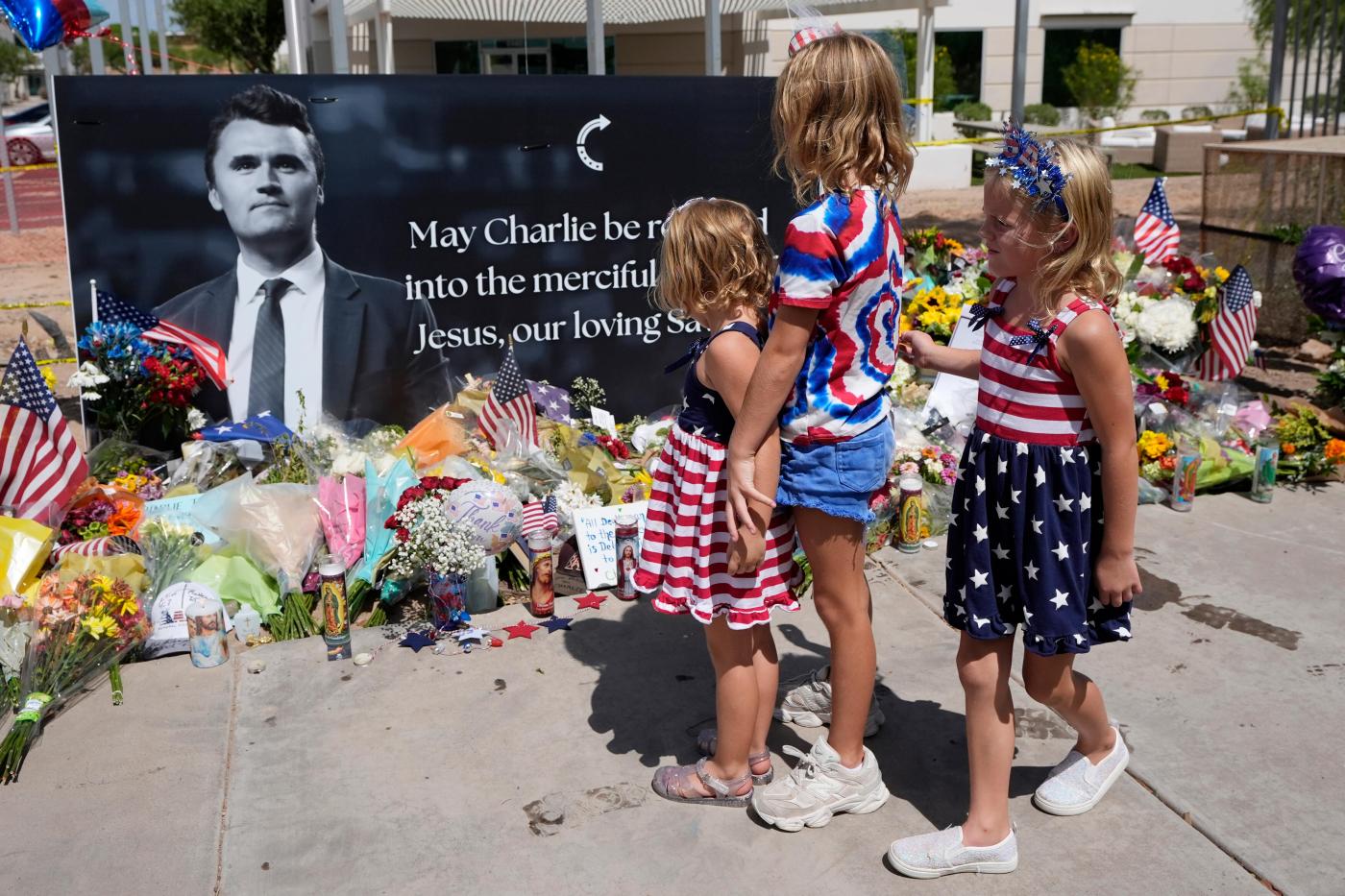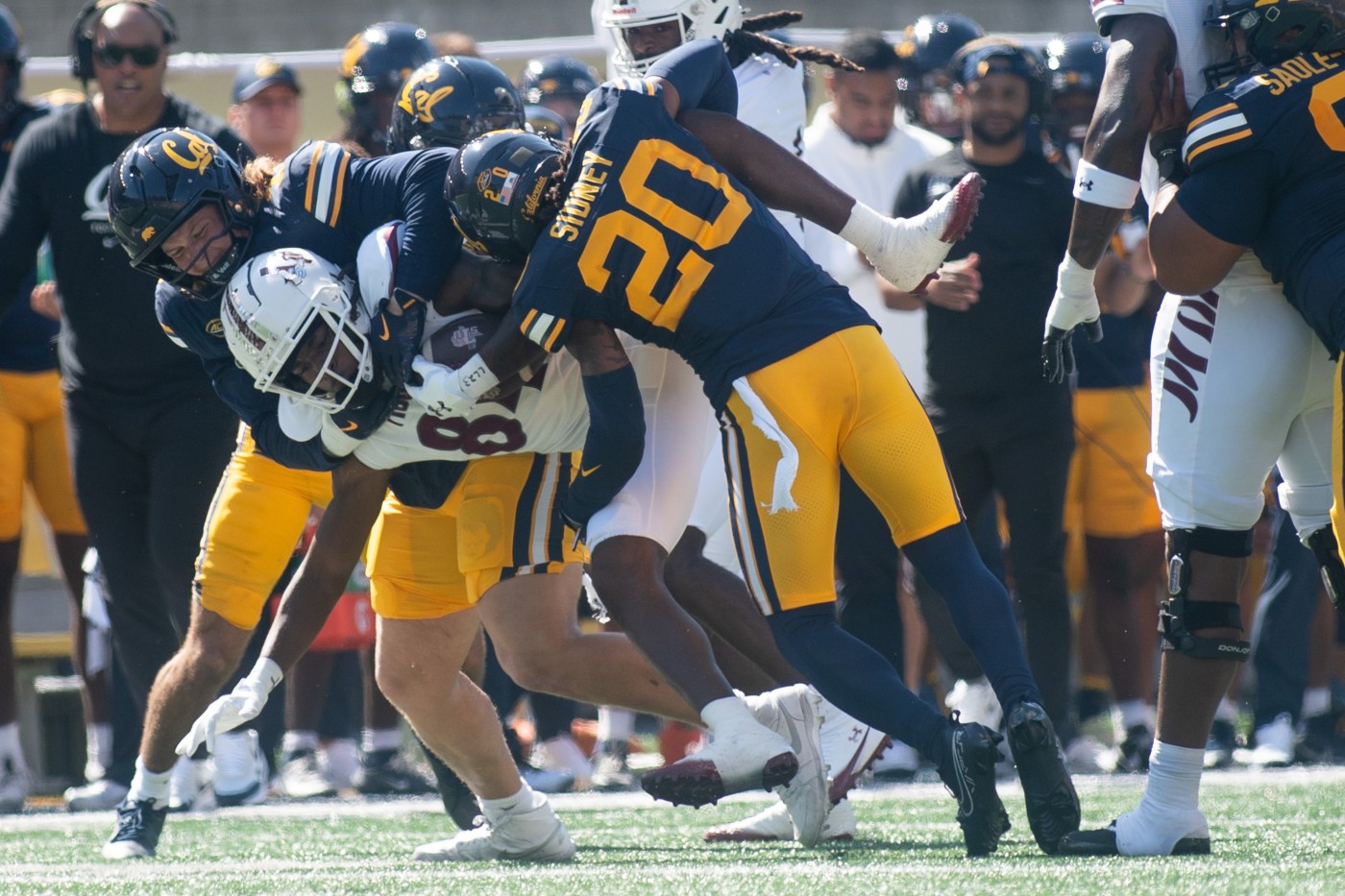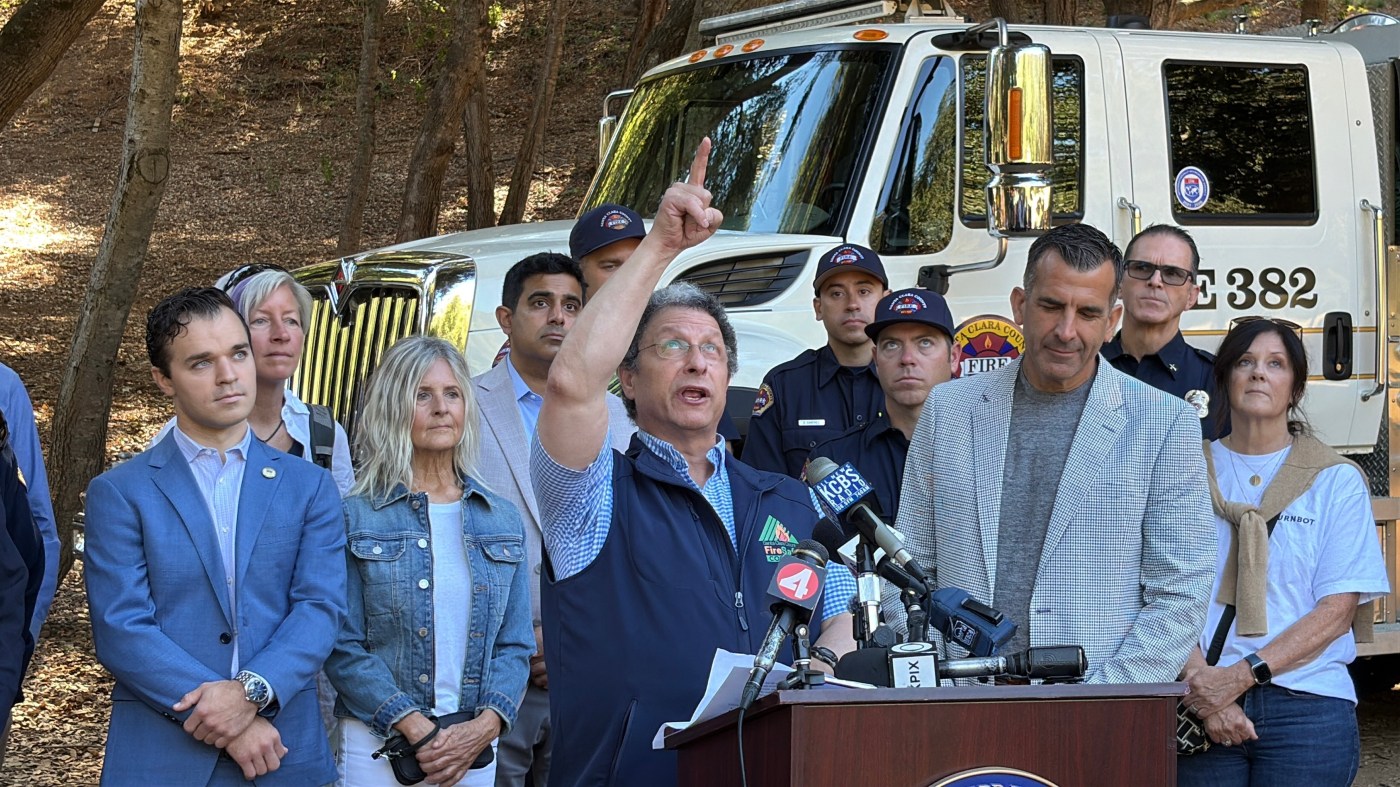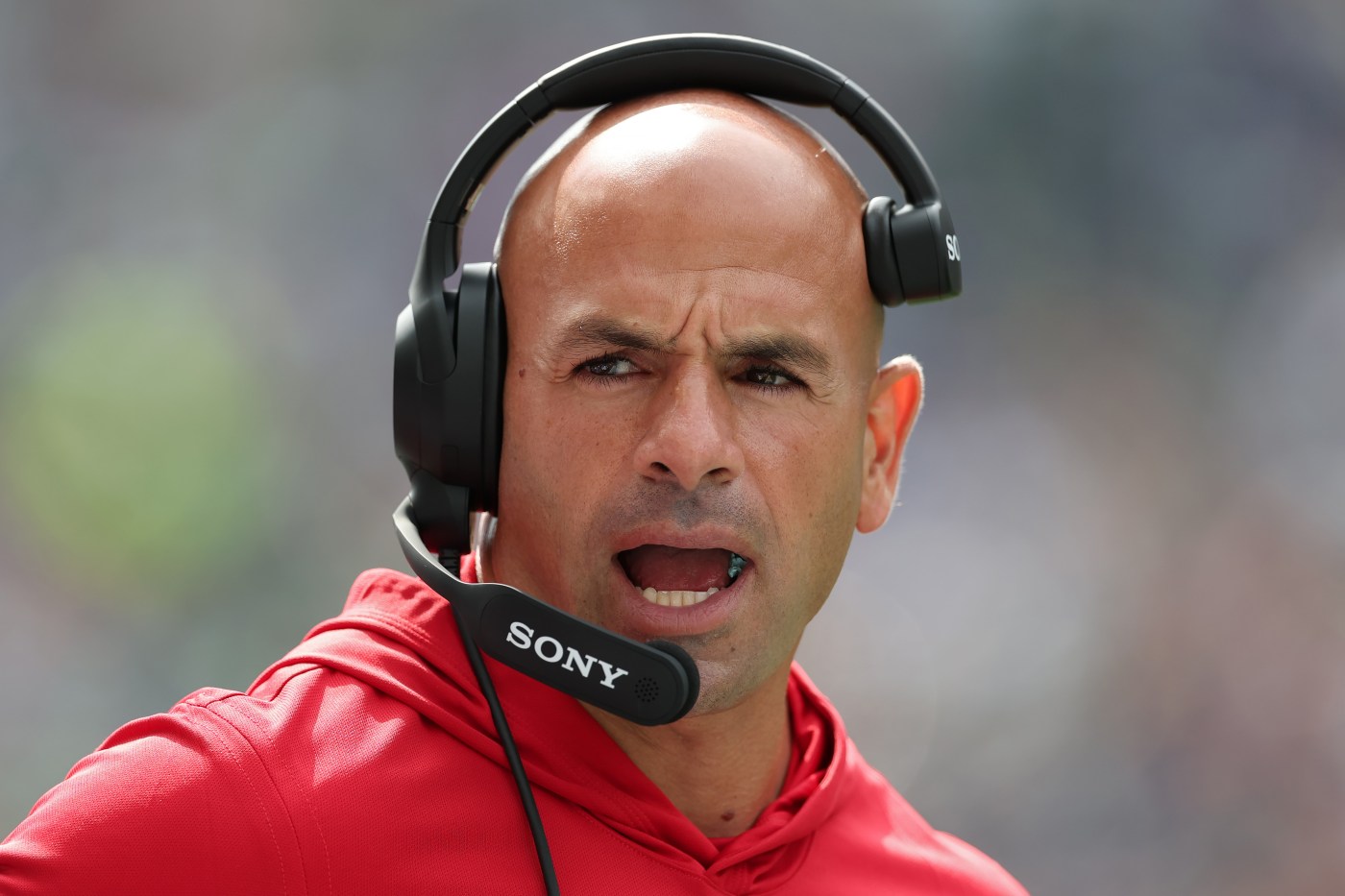At PG&E’s weather lab in San Ramon, Scott Strenfel studies a huge digital map on the wall displaying temperatures, dew points and humidity levels across California. At a spot in Kern Hills outside of Bakersfield, wind gusts of 39 mph were forecast to hit.
“Hey team, thunderstorm outflow down in Kern at 3 p.m.,” Strenfel calls out to his fellow scientists, each behind double computer screens. “You guys see it?”
Related Articles
When is your home safe after wildfire smoke? California researchers have some answers
California to boost utility wildfire fund by $18 billion
Wildfire threats to California water resources demand attention, group warns
Firefighters who drop from the sky to climb from ground in bid to save giant sequoias in Sierra from Garnet Fire
Brentwood moves forward with new downtown fire station
Strenfel leads PG&E’s meteorology operations and fire science team. His job is to help prevent the utility’s equipment from sparking catastrophic wildfires by developing models to determine when to shut off power to customers.
“We want to mitigate catastrophic fires,” he said, “but we also don’t want to overuse public safety power shut offs because we know it’s our tool of last resort.”
With September and October the height of California’s wildfire season, Strenfel’s responsibilities are, as he puts it, “pretty incredible.”
Below is a recent interview with Strenfel, edited for length and clarity.
Q. Do you feel like when these big wind events come through, there’s this sort of race against time to make sure that these devastating fires don’t happen again?
A. Since 2017-2018, we’ve definitely felt like we’re on that treadmill, and we’re trying to run as fast as we can and develop the most scientifically accurate models that we can to mitigate the risk of catastrophic fires. We never want to see that happen again, not on our watch.
Q. What should have been done differently to prevent the North Bay wildfires in 2017?
A. We’ve got to remember that was seven years ago, and so we’ve made some huge strides … We did not have a public safety power shut off program. And now we do. We’ve really built up a data science and analytics team within PG&E and the meteorology department, and so pretty much for every operational meteorologist that is forecasting the weather, I also have them paired with a data scientist who is creating these models that we use to mitigate risk.
Q. What are those models?
A. The main models we use for PSPS (public safety power shutoffs) are the Fire Potential Index that predicts the probability of fast, intense spreading fires, and the Ignition Probability Weather Model that predicts the probability of ignitions, as well as fire simulations of over 100 million virtual fires per day. On top of these models, we layer on the machine learning wind gusts, as well as forecasts from external agencies like the National Weather Service.
Q. Tell me how the fire potential index model works.
A. The fire potential index provides data every hour at these hexagons that are 0.7 kilometers big. So we’re modeling the weather at about 200,000 of these little areas of our service territory every hour going out five days … It’s a machine learning classification model developed internally by our data science team, and we’ve taken weather data, fuel data, topography data and historical fire occurrence, and have trained up a machine learning model to learn what conditions lead to catastrophic fires. We can extract a value of basically what is the probability that we have critical or catastrophic fire potential and then we can use those values to determine what the relative risk is.
Q. How does this model work, going backwards in time?
A. We’re able to basically take the model and run it backward over the past 30 years so that we can extract what it was saying on October 7, 2017. If I had a time machine and I had these models and I had these tools, and I went back in time, would we have been de-energizing North Bay, for example, or these circuits that caused these catastrophic fires? Basically, with this incredible historical data that we have, we’re able to cast the model over the past 30 years, and then calibrate it such that we’re not only mitigating a lot of the catastrophic fires of the past, but we’re also balancing the impact of PSPS events in order to essentially establish the models and establish the guidance that we would then use.
Q. What happens when a dry windstorm is upon us?
A. We have over 1,600 weather stations and 600 cameras and all that data is represented on a map where I can see all of our infrastructure, and we’re using that in real time to determine whether the winds are high enough to justify turning the power off proactively.
Q. Lightning can be a big cause of a fire, but it’s very hard to predict where it will strike. How do you factor that in?
A. As we start to see clouds bubbling up, thunderstorms developing, we can then look at radar, and then we can look at exactly where the lightning strikes are happening in relation to our assets.
Q. How do you know how effective you’ve been in preventing wildfires so far?
A. When you compare October 26 of 2019 (when power was shut off to nearly a million customers) to the event that started this all off, (the North Bay fires) in October 2017, the 2019 event was stronger than 2017. In 2017 you had a dozen catastrophic wildfires that broke out. In 2019, we had zero, although we found after the fact, we had 450-plus cases of damage, including trees through our lines and branches down. It’s impossible to prove, but we definitely prevented something.
Q. Has the technology failed you?
A. One of my adages is, ‘all models are wrong, some are useful.’ As a scientist, I’m a trained pessimist and skeptic. But what I will say is that these are the most accurate models to date, absolutely. Are they 100% right? No. We can’t forecast the weather perfectly. That remains the big gap.
Scott Strenfel
Title: PG&E Senior Director Meteorology Operations and Fire Science
Age: 43
Marital status: Married, 2 school-age children who are active in sports
Education: Leland High School graduate; San Jose State University bachelor’s degree in meteorology and master’s degree in meteorology with an emphasis in fire science.
Five Interesting Things About Scott Strenfel
With his wife, Kari, Strenfel has summited mounts Kilimanjaro, Whitney, Shasta and a few 14’ers in Colorado.
Grew up in San Jose with the Mercury News on his family breakfast table every morning.
The second San Jose State student enrolled in the Fire Weather Research Lab program, where he met his wife who was the first.
Recognized this year as the university’s College of Science Outstanding Recent Graduate.
Enjoys mountain biking, snowboarding and skiing with his family.
